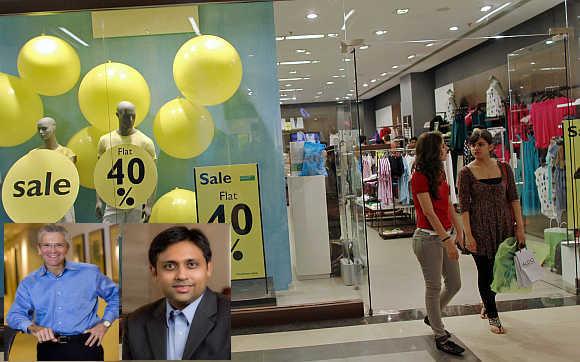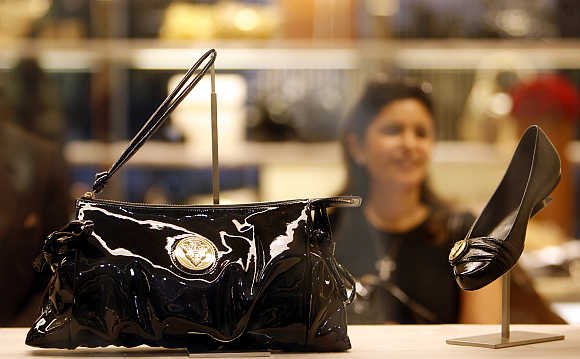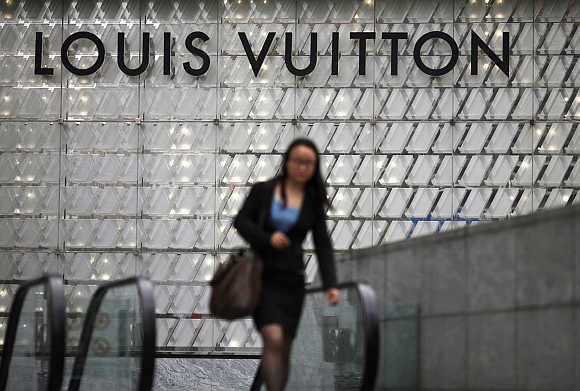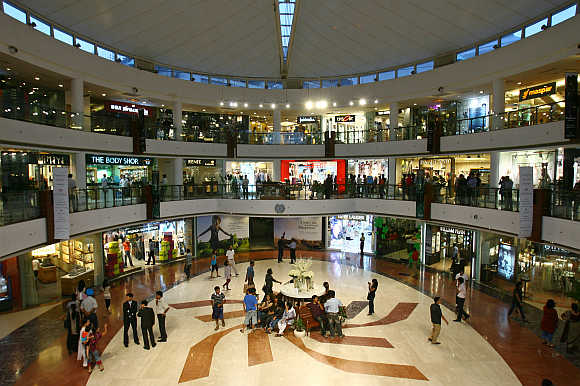Photographs: Danish Siddiqui/Reuters Faisal Kidwai in Mumbai
Indian and Chinese households are going to spend $10 trillion per year by 2020, say Michael Silverstein and Abheek Singhi, co-authors of The $10 Trillion Prize: Captivating the Newly Affluent in China and India.
Silverstein, Managing Director, Boston Consulting Group, and Singhi, Head of Consumer (South Asia), BCG, say an Indian born in 2009 will spend $184,000 during the lifetime, while a Chinese will spend $632,000.
India will come on its own after 2030 thanks to its sheer size and young demography, they tell Faisal Kidwai on the sidelines of a discussion organised by the Asia Society in Mumbai.
Why the name $10 Trillion Prize?
Abheek Singhi: That's the size of the prize both in China and India by 2020. Over the 10 years, the cumulative spend is going to be nearly $60 trillion and private consumption by households is going to be $10 trillion, so that's the reason behind the book title.
Why did you decide to write the book?
Abheek Singhi: Two years back, our chief executive officer said that we have written a lot about the West and now it's time to write about the future, which is China and India, and asked us to write a definitive book on consumers in China and India.
...
'Indians were richer than Chinese'
Image: A view of the city skyline from the Zhongfu Building in Beijing.Photographs: Jason Lee/Reuters
One of the challenges in both countries was finding reliable data and one of the attempts of the book is to create a data base that is going to put to rest some of the myths and expose the realities of the consumer market in both nations.
So, we conducted our own proprietary research, studied more than 30,000 consumer surveys across different economic backgrounds and did personal interviews.
Could you tell us a bit about consumption and income trends in India?
Michael Silverstein: India is witnessing growth in per capita income from $1,000 to $4,000, while Chinese are seeing their incomes increase from $4,000 to $12,000.
Life expectancy in India for a child born in 1960 was 42 years, while it was 47 in China. Life expectancy for a child born in 2009 is 64 years. In 1960, the Indians were consuming at a rate that was twice the Chinese, which means they were more affluent than the Chinese.
We expect to see lifetime consumption rise for the baby born in 1960 from $14,000 to $184,000 for somebody born in 2009. Between 2030 to 2050, India will become the most populous nation with a young demographic.
...
'Indians were richer than Chinese'
Image: A woman looks at the products at a Gucci showroom in Mumbai.Photographs: Arko Datta/Reuters
How would you compare that with China?
Michael Silverstein: The life expectancy of a Chinese person born in 1960 was 47, but now it's 73 for a person born in 2009. The per capita income in 1960 was $100, while it was $1,429 in 2009. Lifetime spending of a Chinese person born in 1960 was $16,400. Lifetime spending of a Chinese person born in 2009 was $632,000.
The Chinese with $12,000 per capita income can afford to build a house, buy a car and not a scooter and actually pay for preventive medicines, not only when you get sick. Both countries are experiencing growth, but India is eight to nine years behind China.
What are the major differences that stand out between China and India consumer markets?
Abheek Singhi: The big difference is the structure of the markets. In China, there are 1.2 children per family, while it's more than three in India. What this means is that the family has much more disposable income per family, so consumption is much higher for the same income level compared to India.
Second is education and women employment. About 80 per cent women in China are in workforce, while in India it's significantly lower, so that's a major difference.
...
'Indians were richer than Chinese'
Image: A woman walks by a Louis Vuitton luxury boutique at a mall in Shanghai.Photographs: Carlos Barria/Reuters
Third is income pyramid. There are more people in China with discretionary, disposable income than in India, so the luxury market is much bigger there than here.
Fourth is rural and urban divide. Twenty-five years ago both countries had similar percentage of people who lived in rural areas, but China created new cities, invested in infrastructure and today more than 50 per cent Chinese live in urban areas, while only 30 per cent Indians live in urban areas.
Over the course of next 10-20 years, that number in India will be around 35-37 per cent, while in China it will be close to 70 per cent.
You have said that the luxury market in China is currently bigger than in India. How do you see it developing in India?
Abheek Singhi: The luxury market in India will be fairly small until 2020. There are three reasons for that. First, Indians don't have that much disposable income. Second, Indian concept of luxury is different from Western concept of luxury. Indians would spend on sarees and shalwar kameez rather than on Western dresses.
They would spend on gold rather than on diamond. So, the model Western luxury brands have adopted is not sustainable in India.
...
'Indians were richer than Chinese'
Image: Employees adjust products inside their showroom at a mall in New Delhi.Photographs: Adnan Abidi/Reuters
Third is the supply side issue. There's not enough retail space, environment and people to offer that experience.
That means a foreign company planning to enter the Indian market won't find the going so easy.
Abheek Singhi: The major challenge is the diversity of the country, especially for the multinationals as they are typically used to homogenous markets.
Although many MNCs have heard about the diversity, but haven't actually experienced it and this diversity baffles them.
Then there's the infrastructure challenge. Whether it is roads, ports or just the physical infrastructure, add to that the fact that you have to serve not 30,000 or 50,000 points of sales but 10 million.
Third is the demanding consumer. Indian consumer wants cost and quality and no willingness to let go on either of them. Indians are the most demanding consumers in the world and companies are not prepared for that.
So a joint venture is a better option?
Abheek Singhi: Joint venture is a good entry option. JVs are like a marriage destined for divorce, so you can have the divorce amicable or not. Every company that goes into JV knows that one day it will end.
...
'Indians were richer than Chinese'
Image: A woman walks by a Gucci luxury boutique at a mall in Shanghai.Photographs: Carlos Barria/Reuters
What makes these two markets so attractive?
Abheek Singhi: The sheer size of the opportunity stands out. Never before in the history of humankind, have we had a situation where within a decade you have a $7 trillion income-led consumption. If you look at today's global consumption, 15 per cent increase will come from just these markets. Of the total incremental growth, about 70 per cent will come from these two countries.
It's a large prize, but not an easy prize to win. The success will not come to companies who think that just because they are number one in the United States or France will win in India or China. They should think of India and China as continents and win one country at a time rather than thinking of winning them at one go.
Where do you see these two countries going in the next 30 years?
Michael Silverstein: A lot depends on the political environment. I don't see why these three countries cannot have concurrent prosperity. There's no reason why each nation can't focus on its own advantage instead of having adversarial position.
...
'Indians were richer than Chinese'
Image: A shopping mall in New Delhi.Photographs: Vijay Mathur/Reuters
On the other hand, the scarcity of water, predomination of patriotism and the ever-increasing spending on defence in each of these three countries are causes of worry.
The United States spends three times more on defence compared to China and 10 times more than India. Other worry is protectionism. Trade barriers have to come down. There are lot of jobs and sectors that are surviving only because of protectionism.
For instance, the retail industry in India is one of the world's least efficient. It's about job keepers spending hundreds of hours per week just to survive. It will take four years for Ikea, a Swedish home products company, to open its first store in India - and that says a lot.








article